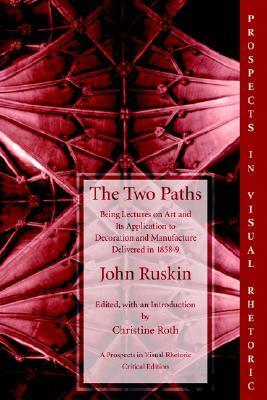
Author

Librarian Note: There is more than one author by this name in the Goodreads database. English writer and critic John Ruskin shaped Victorian artistic taste through his books Modern Painters (1843-1860) and The Stones of Venice (1851-1853). Margaret Ruskin at 54 Hunter Street bore the only child to John James Ruskin. His father, a prosperous, self-made man, a founding partner of Pedro Domecq sherries, collected art and encouraged literary activities of his son, while his mother, a devout evangelical Protestant, early dedicated her son to the service of God and devoutly wished him an Anglican bishop. With few toys, Ruskin, who received his education at home until the age of 12 years in 1831, rarely associated with other children. During his sixth year in 1825, he accompanied his parents on the first of many annual tours of the Continent. His father encouraged him to publish his first poem, On Skiddaw and Derwent Water, at the age of 11 years in 1830, and four years later, in 1834, he published his first prose work, an article on the waters of the Rhine. In 1836, when he matriculated as a gentleman-commoner at Christ Church, Oxford, he wrote a pamphlet defending the painter Turner against the periodical critics, but at the artist's request he did not publish it. While at Oxford (where his mother had accompanied him) Ruskin associated largely with a wealthy and often rowdy set but continued to publish poetry and criticism; and in 1839 he won the Oxford Newdigate Prize for poetry. The next year, however, suspected consumption led him to interrupt his studies and travel, and he did not receive his degree until 1842, when he abandoned the idea of entering the ministry. This same year he began the first volume of Modern Painters after reviewers of the annual Royal Academy exhibition had again savagely treated Turner's works, and in 1846, after making his first trip abroad without his parents, he published the second volume, which discussed his theories of beauty and imagination within the context of figural as well as landscape painting. On 10 April 1848 Ruskin married Euphemia Chalmers Gray, and the next year he published The Seven Lamps of Architecture, after which he and Effie set out for Venice. In 1850 he published The King of the Golden River, which he had written for Effie nine years before, and a volume of poetry, and in the following year, during which Turner died and Ruskin made the acquaintance of the Pre-Raphaelites, the first volume of The Stones of Venice. The final two volumes appeared in 1853, the summer of which saw Millais, Ruskin, and Effie together in Scotland, where the artist painted Ruskin's portrait. The next year his wife left him and had their marriage annulled on grounds of non-consummation, after which she later married Millais. During this difficult year, Ruskin defended the Pre-Raphaelites, became close to Rossetti, and taught at the Working Men's College. In 1855 Ruskin began Academy Notes, his reviews of the annual exhibition, and the following year, in the course of which he became acquainted with the man who later became his close friend, the American Charles Eliot Norton, he published the third and fourth volumes of Modern Painters and The Harbours of England. He continued his immense productivity during the next four years, producing The Elements of Drawing and The Political Economy of Art in 1857, The Elements of Perspective and The Two Paths in 1859, and the fifth volume of Modern Painters and the periodical version of Unto This Last in 1860. During 1858, in the midst of this productive period, Ruskin decisively abandoned the evangelical Protestantism which had so shaped his ideas and attitudes, and he also met Rose La Touche, a young Irish Protestant girl with whom he was later to fall deeply and tragically in love. Throughout the 186